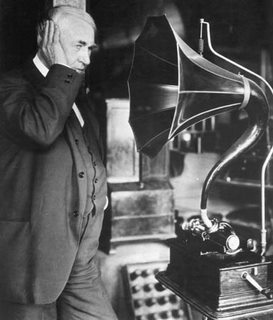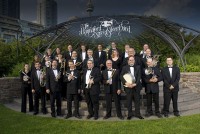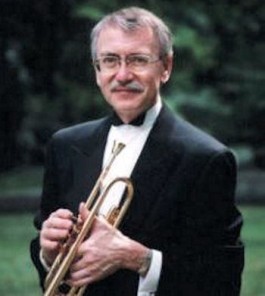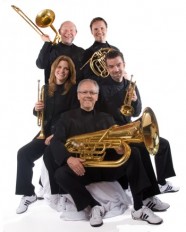Standing On Guard
For most Canadians, the event of the year so far has been the Winter Olympic Games in Vancouver. By an unanticipated quirk, the massive media coverage of the games spawned the overnight evolution of our national anthem into an international pop song of sorts. Canadians were joined in the spontaneous rendition of O Canada in the spectator seats at the events and in the streets by visitors from around the world. It even made its way on to more than one late night American TV show.
For me, this sudden unprecedented attention to the national anthem, and the not-infrequent controversies surrounding some performances, put my curiosity into overdrive and spawned a series of questions. What were the origins of national anthems in general, and Canada’s in particular? What should be the criteria for a good national anthem? How and where should the national anthem be performed? Should all those present at an event sing or should it be left to a soloist? Should a soloist be permitted to improvise on the melody? How should our citizens behave during its performance? Who wrote the music? Who wrote the words? Are the words appropriate, or should they be changed to placate the wishes of various interest groups? And so it goes.
According to most authorities, national anthems had begun to appear in a number of European countries by the beginning of the 18th century. However, the practice of having a government designate a particular patriotic song as the country’s official anthem didn’t become widespread until late in the 19th century. As for criteria for a good national anthem, the general consensus is that it should have a good melody, meaningful words, be easy to remember and easy for the average individual to sing.
As for Canada’s national anthem, like the country’s progress to nationhood, the process was evolutionary rather than revolutionary. As early as 1836 we had a list of acceptable patriotic songs. Over the years, O Canada, The Maple Leaf Forever and God Save the Queen came to the fore as leading contenders. It wasn’t until 1964 that Prime Minister Lester Pearson proposed some government action to proclaim an “official” national anthem. By 1967 a parliamentary committee unanimously recommended that O Canada be so designated. It wasn’t until June 27, 1980, three days after the one hundredth anniversary of its first performance, that parliament passed the bill making it official. It was actually signed into law on July 1, 1980 as part of that year’s Dominion Day celebrations (Now changed to Canada Day).
The song O Canada was originally commissioned by the Lieutenant-Governor of Quebec, the Honourable Théodore Robitaille, for the 1880 Saint-Jean-Baptiste Day ceremony. Calixa Lavallée wrote the music, which was a setting of a patriotic poem composed by the poet and judge Sir Adolphe-Basile Routhier.
Calixa Lavallée was born in Verchères Quebec in 1842, studied for a while in Paris and eventually settled in Boston. He was well regarded in his day as a performer, composer and conductor, and performed regularly throughout North and South America.
The original lyrics were in French, and it wasn’t until 1906 that they were translated into English. While the original French words have remained unchanged and spared from tampering over the years, the same can’t be said for English words. Two years after the original literal translation appeared, Robert Stanley Weir wrote another English version, one that is not a literal translation of the French. In October 1969 the government accepted the offer of publishers Gordon V. Thompson to sell to the Crown, for the sum of one dollar, the copyright to the Weir words for O Canada. Weir’s lyrics have been “officially” revised by parliament at least twice. On a number of occasions, the 1980 version has been under attack by special interest groups.
With Olympic fervour running high, Prime Minister, Stephen Harper suggested that he might legislate the words “all our sons command” out, in favour of more “gender neutral” wording. It didn’t take long for the Prime Minister to beat a hasty retreat from that front when the responses from many quarters came thundering in. Some of the most interesting came from Ottawa correspondents for news organizations. One such response was the suggestion that the idea had been hatched by a group from the Prime Minister’s office while hung over after celebrating the victory of the Canadian men’s hockey team.
Canada’s only woman Prime Minister, Kim Campbell, also stepped into the fray. She did not just want the words “all our sons command” changed to something “gender neutral”. On a national radio interview she objected to “our home and native land,” and suggested that be changed to “our home on native land.” That did not sit well with all people born here, whose ancestors arrived a few centuries ago before Canada was a nation. In any case, for now at least, the storm on words has subsided. When it might return is anyone’s guess.
The criterion of being easy for the average individual to sing is certainly not a characteristic found in the US Star Spangled Banner. This may be the reason why it has become the norm at major sporting and cultural events in the US to have a soloist sing the national anthem. Perhaps the original intent was to have the audience join in with the soloist providing a solid base. Unfortunately, that is rarely the case. Which brings up a pet peeve of mine, that of a soloist improvising on the melody. In some cases this might better be described as butchering the melody.
One reader of a small town community newspaper summed up his reactions to the rendition at the official opening of the Olympics as follows: “Is it just me or is there anyone else tired of hearing our national anthem twisted into some artistic ego trip? There should be a level of respect required by the artists selected to represent us on the international stage. A performer or an event organizer has no right to re-work the song. It is not open to interpretation.”
He then goes on: “The publicity of the moment should be enough of a thrill and a boost to a performer’s career without the need to hijack a country’s national anthem. If they wish to put their own spin on the song, they can do so on their own album and take their chances on whether the consumers appreciate it.” I concur. Any organization engaging the services of a vocalist to perform the national anthem should write into the contract that the “official” melody is not to be changed in any manner.
At some stage somewhere around 1900 it had become the accepted custom to have a “national song” performed prior to every concert, theatrical production and other similar public event. In fact, the city of Toronto for many years had by-law requiring such a performance. That by-law was not abolished until 1967. For most community bands the national anthem is an integral part of most programmes. On the other hand, I can’t recall ever hearing it at any community orchestra performance. Why the different standard?
Next month we’ll be back to the community music scene after the huge Hannaford Brass Band Binge. We also hope to have a better look at the Johnny Cowell tribute concert next month.
Definition Department
This month’s lesser known musical term is APPROXIMENTO: “A musical entrance that is somewhere in the vicinity of the correct pitch.” We invite submissions from readers.
Coming Events: See the listings section for full details.
Weekend of April 9, 10 and 11: The Hannaford Street Silver Band presents its seventh annual Festival of Brass at the St. Lawrence Centre. See listings for details.
Wednesday, April 14 7:30: The Plumbing Factory Brass Band, Henry Meredith, conductor, presents “Heros – ordinary and extraordinary.” Byron United Church, 420 Boler Rd., London, Ontario.
May 7 8:00 pm: The Etobicoke Community Concert Band, John Liddle, conductor, presents “Glorous and Free,” a programme of brilliant marches, grand anthems and beautiful songs – a stirring musical tribute to our Canadian military featuring Kathy Thompson, guest vocalist. Silverthorn Collegiate Auditorium, 291 Mill Rd.
Down the Road
Saturday, May 15 2:00 pm: The Northdale Concert Band, with conductor Stephen Chenette, pays tribute to legendary Canadian composer and trumpet player Johnny Cowell. The concert will feature some of Cowell’s most famous solos as performed by well-known trumpet player John Edward Liddle, plus a special guest appearance by Johnny Cowell himself. Scarborough Civic Centre, 150 Borough Dr.
Jack MacQuarrie plays several brass instruments, and has performed in many community ensembles. He can be contacted at: bandstand@thewholenote.com.







